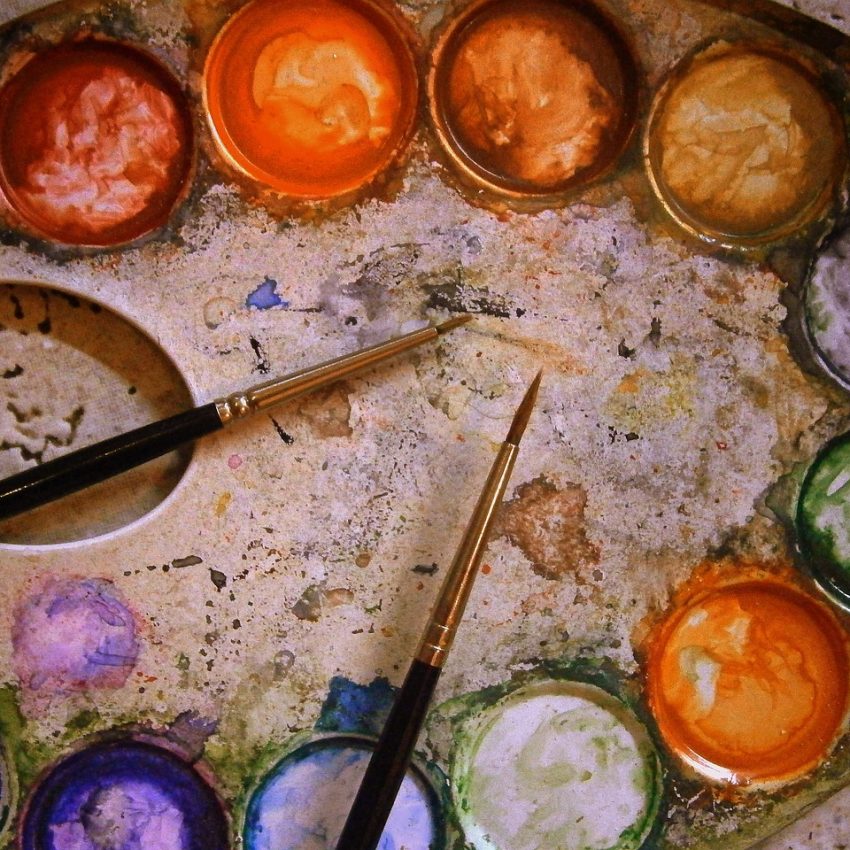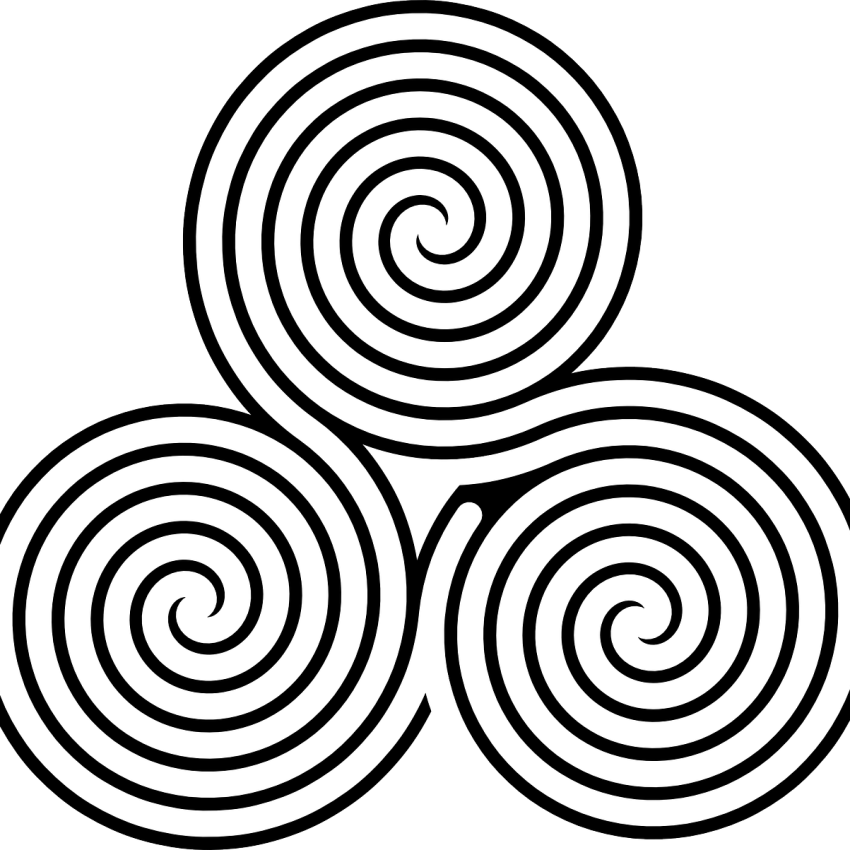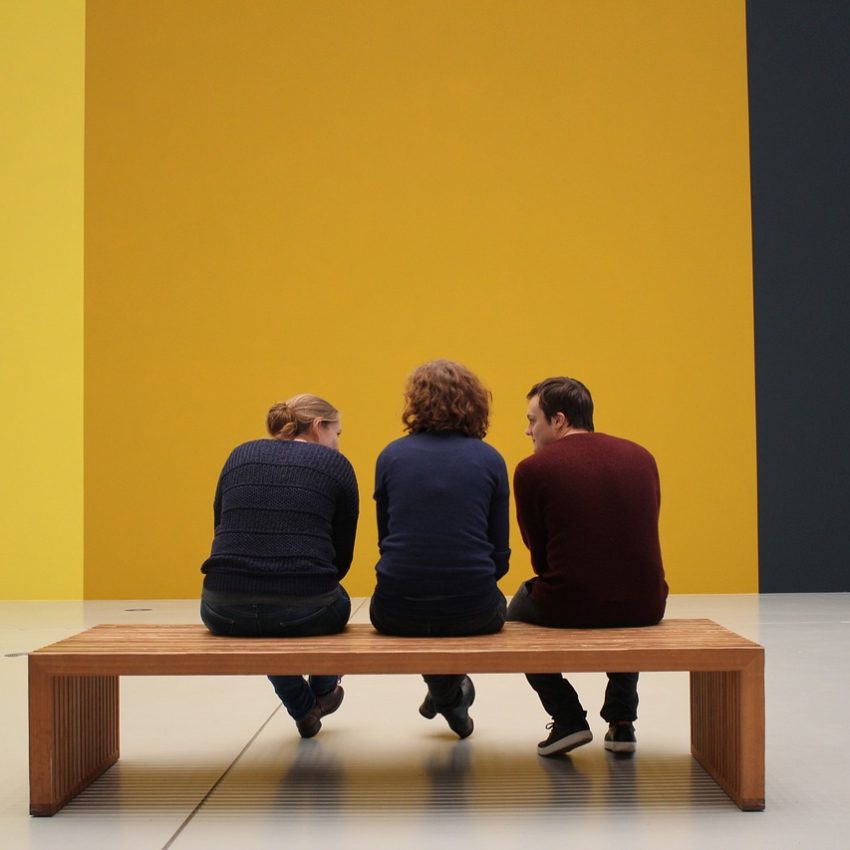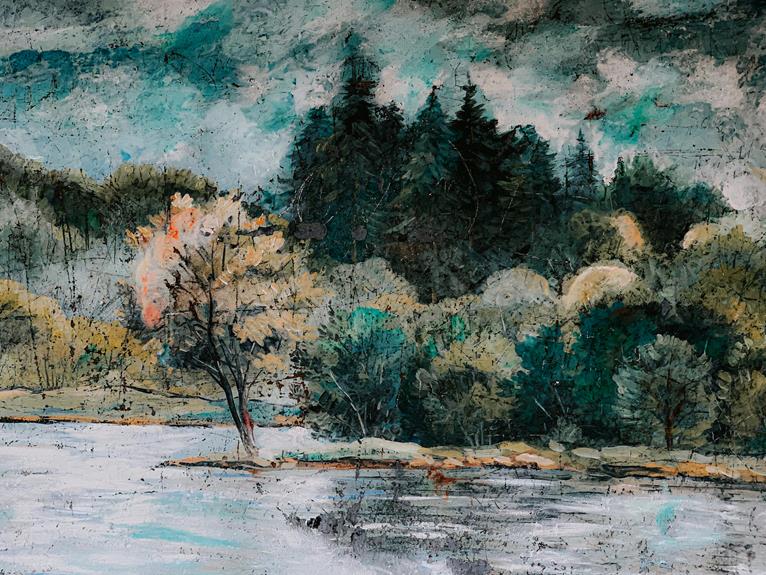Exploring The Essence of Abstract Art & Abstract Art Prints as Timeless Wall Art
Introduction
Abstract art is a vivid portrayal of the artist’s innermost emotions and thoughts, transcending the boundaries of traditional representation. It challenges us to delve deeper into our own interpretations and connect with the artwork on a personal level. Unlike realistic art, abstract pieces do not aim to mimic reality but rather evoke powerful feelings that are open to varied interpretations.
In essence, abstract art prompts viewers to contemplate the intangible aspects of life, offering a visual language that speaks directly to our subconscious. Each brushstroke or splash of color carries profound meaning, inviting us on a journey of exploration and discovery within ourselves. By embracing abstraction, we immerse ourselves in a world where imagination knows no bounds and creativity reigns supreme – truly an empowering experience for both artists and viewers alike.
History: Evolution and Key Artists in Abstraction
In the realm of abstract art, the evolution of this groundbreaking movement can be traced back to the early 20th century. Pioneered by artists like Wassily Kandinsky and Piet Mondrian, abstraction revolutionized traditional artistic concepts by focusing on shapes, colors, and forms rather than realistic depictions. These artists sought to evoke emotional responses and explore the inner depths of human consciousness through their unique visual languages.
As abstraction continued to flourish throughout the 20th century, key figures such as Jackson Pollock emerged onto the scene with their innovative approaches to non-representational art. Pollock’s drip painting technique became synonymous with Abstract Expressionism, a movement that aimed to capture raw emotion and spontaneity on canvas. The legacy of these trailblazing artists paved the way for numerous contemporary practitioners who continue to push boundaries and challenge conventional notions of art through their bold experimentation with abstract forms.
Characteristics: Freedom, emotion, and non-representational elements
Abstract art is a realm where freedom unfurls its wings, allowing artists to break free from the constraints of representation and delve into the uncharted territories of pure emotion. Here, brushstrokes dance on canvas, whispering tales of raw feeling and unspoken truths that transcend words. In this space of boundless creativity, artists harness their innermost emotions and translate them into vibrant colors, dynamic shapes, and expressive forms that speak directly to the soul.
Emotion pulses through every stroke and swirl in non-representational abstract art, creating an electrifying energy that ignites a powerful reaction within the viewer. By eschewing conventional imagery in favor of evocative gestures and intuitive marks, artists evoke a visceral response that transcends language barriers and cultural boundaries. This unrestricted form of artistic expression invites viewers to embark on a personal journey where they can interpret the artwork based on their own emotional responses rather than being confined by prescribed meanings or narratives.
Types: Geometric, gestural, color field, and more
Abstract art encompasses a wide range of styles and techniques, each with its own unique characteristics and appeal. Geometric abstraction focuses on precise shapes, lines, and forms to create a sense of order and structure within the artwork. Gestural abstraction, on the other hand, emphasizes spontaneous brush strokes and movements to convey emotion and energy on the canvas.
Color field abstraction places a strong emphasis on color itself as the primary means of expression, with large blocks of color creating a sense of depth and complexity within the composition. Moving beyond these traditional categories, contemporary abstract artists often blend multiple styles or create entirely new approaches to push the boundaries of what abstract art can be.
The beauty of abstract art lies in its ability to evoke emotions, stir imagination, and challenge our perceptions in ways that are both unexpected and profound. By exploring different types of abstraction such as geometric, gestural, color field, or experimental forms created by modern artists, we open ourselves up to new possibilities for understanding and appreciating the boundless creativity that exists within this dynamic genre.
Abstract Art Influence: Pioneers and Philosophies Shaping Modern Movements
Influence plays a significant role in shaping modern art movements, particularly in the realm of abstract art. The impact of influential artists like Wassily Kandinsky and Kazimir Malevich cannot be understated, as their innovative approaches to color, form, and composition laid the foundation for future abstract expressionists.
These artists challenged traditional notions of representation and paved the way for a more subjective and emotionally charged approach to art.
Moreover, the influence of philosophical movements such as existentialism and phenomenology on modern art cannot be ignored.
Artists like Mark Rothko and Willem de Kooning drew inspiration from these philosophies to create works that delved deep into human emotions and experiences.
This intersection between philosophy and art gave rise to a new wave of abstract expressionism that reflected the complexities of human existence in powerful ways.
In conclusion, the influence on modern art movements has been multifaceted, encompassing artistic pioneers, philosophical musings, societal shifts, and cultural exchanges.
As we continue to explore the ever-evolving world of abstract art, it is crucial to acknowledge the diverse range of influences that have shaped this vibrant and dynamic movement.
With each new generation of artists building upon the foundations laid by their predecessors, we can expect further innovation and experimentation in the realm of abstract art.
Artists Working in the Realm of Abstract Vision
Artists working in the realm of abstract vision explore the endless possibilities of form, color, and texture, pushing the boundaries of artistic expression to new heights. Through their experimental techniques and innovative approaches, these artists challenge viewers to see the world in new and unexpected ways. From contemporary abstract painters to mixed media artists, those working in the realm of abstract vision continue to inspire and captivate audiences with their bold explorations of the unknown.
Fauvism: Colorful Expressions in Abstract Art Prints
Fauvism burst onto the art scene in the early 20th century, with its bold use of color and expressive brushwork captivating audiences around the world. Led by artists such as Henri Matisse and André Derain, the Fauvist movement embraced abstraction as a means of conveying intense emotional experiences. In the realm of abstract art prints, Fauvist artists experimented with vibrant colors and dynamic compositions, creating works that pulsate with energy and vitality.
Pablo Picasso's Cubism: Paving the way for Abstract Expression
Pablo Picasso’s Cubism stands as a pivotal moment in the history of art, fundamentally redefining the concept of abstract expression. Born out of the early 20th century, Cubism shattered traditional artistic conventions by fragmenting forms and perspectives, offering viewers a multifaceted interpretation of reality. Picasso, along with Georges Braque, pioneered this revolutionary movement, challenging the notion of representing objects in a single, fixed viewpoint. Through Cubism, Picasso deconstructed and reconstructed reality, unleashing a new visual language that emphasized the underlying structure and essence of forms. The radical departure from representational art laid the groundwork for subsequent abstract movements, inspiring artists to explore new realms of expression beyond the confines of realism. Picasso’s Cubism remains an enduring symbol of artistic innovation, forever altering the trajectory of abstract expression in the modern era.
Cercle et Carré: Abstract Dialogues in Art
Cercle et Carré, founded by Michel Seuphor and Joaquín Torres-García in 1929, provided a platform for artists to explore the principles of abstract art through dialogue and collaboration. The organization’s manifesto called for a rejection of figurative art in favor of a new visual language based on pure form and color. Through exhibitions, publications, and lectures, Cercle et Carré facilitated a vibrant exchange of ideas among artists from diverse backgrounds, laying the groundwork for the development of abstract art movements in the decades to come.
Abstraction-Création: Nurturing Abstract Art Movements
Abstraction-Création, founded in Paris in 1931, served as a vital hub for artists working in the realm of abstraction. The organization’s goal was to promote the principles of abstract art and foster collaboration among artists from diverse backgrounds. Through exhibitions, lectures, and publications, Abstraction-Création played a key role in shaping the trajectory of abstract art movements in Europe and beyond, influencing generations of artists to explore new forms of expression and innovation.
Hilma af Klint: Pioneering Abstract Visionary
Hilma af Klint, a Swedish artist born in 1862, was a pioneering figure in abstract art. Her work, characterized by vibrant colors, geometric shapes, and symbolic motifs, explored spiritual and esoteric themes ahead of her time. Influenced by the spiritualist movement, she believed her art served a higher purpose, acting as a conduit between the material and spiritual worlds. Despite her groundbreaking work, af Klint remained largely unknown during her lifetime. Only in the latter half of the 20th century did her art gain recognition, earning her a place as one of the pioneers of abstract art. Her legacy continues to inspire artists and art enthusiasts globally, cementing her status as a visionary artist who pushed the boundaries of art.
Wassily Kandinsky in Abstract Expressionism
Wassily Kandinsky stands as a towering figure in the realm of abstract expressionism. His theories on color, form, and spirituality revolutionized the way artists approached abstraction. Through his iconic paintings, Kandinsky sought to evoke the innermost emotions of the viewer, transcending the boundaries of the physical world and delving into the realm of the spiritual and metaphysical.
Piet Mondrian: Pioneer of Geometric Harmony
Piet Mondrian, a Dutch artist born in 1872, is celebrated for his pioneering work in abstract art. Inspired by the De Stijl movement, he developed a distinctive style characterized by primary colors and geometric forms. Mondrian believed in the spiritual significance of abstraction, using it to express harmony and balance. His iconic compositions, like “Composition in Red, Blue, and Yellow,” exemplify his exploration of dynamic balance through meticulous arrangements of lines and color blocks. Mondrian’s influence extends beyond art into design and architecture, embodying the timeless appeal of geometric harmony.
Mark Rothko and His Transformative Influence
Mark Rothko, widely regarded as a towering figure in the realm of abstract expressionism, left an indelible mark on the art world with his transcendent paintings that have continued to evoke deep emotional responses from viewers. Through his masterful use of color and form, Rothko endeavored to convey the human experience in its most raw and visceral form, tapping into universal emotions and existential themes. His paintings, characterized by their expansive color fields and ethereal compositions, invite viewers to immerse themselves in contemplation and introspection.
Rothko’s transformative influence on abstract expressionism was profound, reshaping the landscape of modern art in significant ways. By delving into the depths of his own subconscious and confronting the complexities of existence through his art, Rothko inspired a generation of artists to explore new avenues of self-expression and emotional depth. His bold experimentation with color and form challenged conventional artistic norms and encouraged others to push the boundaries of artistic expression.
Frank Stella
Frank Stella, born in 1936, is a pioneering American artist known for his groundbreaking contributions to minimalist and abstract art. Rising to prominence in the 1960s, Stella revolutionized the art world with his minimalist “Black Paintings” series, featuring bold black stripes on raw canvas. Throughout his career, he continued to push boundaries with geometric shapes and vibrant colors, blurring the lines between painting and sculpture. Stella’s influence extends beyond his artwork; he has also impacted education and criticism through teaching at esteemed institutions. Today, Stella’s legacy as an innovator in abstract art remains celebrated worldwide.
Bridget Riley: Pioneer of Optical Art
Bridget Riley, born in 1931, is a British artist renowned for her pioneering work in the realm of optical art. Emerging in the 1960s, Riley became known for her mesmerizing paintings characterized by geometric shapes and vibrant colors that create optical illusions of movement and depth. Her meticulous manipulation of form and color challenges viewers’ perceptions, inviting them to engage in an interactive visual experience. Riley’s dedication to exploring the dynamics of visual perception has earned her international acclaim and solidified her status as one of the most influential artists of the 20th century. Her work continues to inspire artists and captivate audiences worldwide with its innovative approach to abstraction and visual sensation.
Joan Miró: Master of Surrealist Abstraction
Joan Miró, a Catalan painter and sculptor born in 1893, stands as one of the most significant figures in 20th-century art. Miró’s distinctive style, characterized by playful biomorphic forms, bold colors, and surreal imagery, defies conventional artistic categorization. Emerging from the surrealist movement, Miró’s work is imbued with a sense of spontaneity and subconscious exploration. His paintings often feature dreamlike landscapes populated by whimsical creatures and symbols, inviting viewers into a world of imagination and fantasy. Miró’s artistic vision transcends traditional boundaries, reflecting his belief in art as a means of expressing the inner workings of the mind. His influence extends far beyond the realm of painting, encompassing sculpture, ceramics, and printmaking. Miró’s legacy as a master of surrealist abstraction continues to inspire artists and captivate audiences around the world, reaffirming his place as one of the most innovative and enduring figures in modern art.
Barbara Hepworth: Sculpting Abstract Wall Art
Barbara Hepworth’s sculptural works blur the boundaries between art and architecture, inviting viewers to engage with space in new and unexpected ways. Through her use of organic forms and natural materials, Hepworth creates abstract compositions that evoke a sense of harmony and balance. Her iconic sculptures adorn public spaces and private collections around the world, serving as timeless reminders of the power of abstraction to transform the way we experience our surroundings.
Ben Nicholson: Abstracting the Landscape
Ben Nicholson’s abstract landscapes offer viewers a glimpse into the artist’s unique vision of the natural world. Through his use of simplified forms and muted colors, Nicholson captures the essence of the landscape in its most elemental state. His iconic paintings evoke a sense of tranquility and introspection, inviting viewers to contemplate the beauty of the world around them. As a pioneer of abstract art, Nicholson’s work continues to resonate with audiences around the world, reminding us of the enduring power of abstraction to transcend the boundaries of representation.
László Moholy-Nagy: Abstract Visionary of Modernism
László Moholy-Nagy’s innovative contributions to the field of abstract art have left an indelible mark on the trajectory of modernism. As a pioneering artist, designer, and educator, Moholy-Nagy sought to integrate art with technology and science, exploring the potential of abstract forms to communicate universal truths. Through his iconic paintings, photograms, and kinetic sculptures, Moholy-Nagy continues to inspire artists to push the boundaries of abstraction and embrace new modes of creative expression.
Abstract Artists: Visionaries of Form and Colour
Abstract artists are the trailblazers of the art world, pushing the boundaries of form and color to new heights. Through their innovative techniques and visionary approaches, they challenge traditional notions of representation, inviting viewers to explore the depths of their imagination. From Wassily Kandinsky’s expressive brushstrokes to Piet Mondrian’s geometric abstractions, abstract artists captivate audiences with their unique interpretations of the world around them. Their works serve as a testament to the limitless possibilities of artistic expression, inspiring generations of artists to come.
Bauhaus Legacy: Shaping Modern Art and Design with Abstract Vision
The Bauhaus school, founded in Germany in 1919 by architect Walter Gropius, profoundly influenced not only architecture and design but also the realm of abstract art. Rejecting ornamental excesses, the Bauhaus philosophy emphasized simplicity, functionality, and the unity of all artistic disciplines. Its interdisciplinary approach encouraged experimentation and collaboration, fostering a spirit of innovation that resonates with abstract artists today.
Central to the Bauhaus legacy is its emphasis on craftsmanship and materiality, guiding students to master traditional techniques while embracing new technologies. This focus on innovation laid the groundwork for modern design principles and revolutionized the relationship between form and function in abstract art.
Moreover, the Bauhaus redefined architectural theory and practice, promoting rationality, efficiency, and social responsibility. Architects such as Walter Gropius and Ludwig Mies van der Rohe favored clean lines and geometric forms, principles echoed in abstract art’s exploration of shape, color, and composition.
Above all, the Bauhaus encouraged experimentation and openness to new ideas, shaping diverse artistic movements like abstract expressionism and minimalism. Its legacy continues to inspire artists, designers, and educators worldwide, underscoring the transformative potential of abstract art in shaping our visual landscape.
Tate Modern: A Beacon of Abstract Expression
Tate Modern, a beacon of contemporary art, stands as a testament to the evolution of abstract expressionism and its enduring impact on the art world. As one of the premier institutions dedicated to modern and contemporary art, Tate Modern curates a diverse array of abstract works, ranging from the pioneering artists of the movement to emerging talents pushing the boundaries of abstraction. Through its dynamic exhibitions and expansive collections, Tate Modern continues to celebrate the transformative power of abstract expression, offering visitors an immersive journey through the evolution of this influential artistic movement.
Controversies: Criticisms and debates surrounding abstract art
Abstract art has long been a subject of controversy and debate in the art world. Critics often argue that abstract works lack the technical skill and representational qualities found in more traditional art forms, leading to questions about their artistic value. On the other hand, proponents of abstract art see it as a powerful form of self-expression that transcends conventional boundaries and challenges viewers to think beyond the literal.
One common criticism of abstract art is its perceived lack of meaning or message. Some skeptics argue that abstract pieces are nothing more than random shapes and colors thrown together without purpose or intention.
However, supporters of abstract art point out that these works can evoke strong emotions and stimulate thought through unique visual experiences, inviting viewers to interpret them in their own individual ways.
Another point of contention surrounding abstract art is its accessibility or lack thereof. Some believe that abstract works can be intimidating or confusing for those unfamiliar with this genre, leading to accusations of elitism within the art world. Nevertheless, advocates for abstract art argue that its open-ended nature encourages diverse interpretations and allows for personal connections irrespective of one’s background or expertise in classical aesthetics.
Exploring Op Art: Abstract Illusions on Print
Op art, short for optical art, mesmerizes viewers with its abstract illusions and visual trickery. Through the clever use of geometric patterns and contrasting colors, op artists create dynamic compositions that appear to pulsate and shift before the viewer’s eyes. In the realm of printmaking, op art finds new life, as artists experiment with various techniques to capture the mesmerizing effects of optical illusions. From Bridget Riley’s hypnotic prints to Victor Vasarely’s iconic designs, op art continues to captivate audiences with its mesmerizing allure.
Beyond Representation: Navigating Non-Objective Art
Non-objective art transcends the confines of representation, offering viewers a glimpse into the artist’s innermost thoughts and emotions. Through abstract forms and expressive gestures, non-objective artists convey a sense of ambiguity and mystery, inviting viewers to interpret their works in their own unique way. From Kazimir Malevich’s iconic Black Square to Joan Miró’s playful abstractions, non-objective art challenges viewers to engage with art on a deeper, more personal level, transcending the limitations of language and representation.
De Stijl Movement: Abstract Geometry & Wall Art
The De Stijl movement, founded by artists such as Piet Mondrian and Theo van Doesburg, embraced abstract geometry as a means of achieving harmony and balance in art. Through their use of primary colors and orthogonal lines, De Stijl artists sought to create a universal visual language that transcended cultural and linguistic barriers. In the realm of wall art, De Stijl compositions adorn spaces with their stark simplicity and geometric precision, imbuing environments with a sense of order and clarity.
Neo-Plasticism: Piet Mondrian's Abstract Manifesto
Neo-Plasticism, championed by Piet Mondrian, represents a radical departure from traditional artistic conventions. Rejecting the chaos of the world around him, Mondrian sought to distill art down to its purest form through the use of geometric shapes and primary colors. Neo-Plasticism, also known as De Stijl, embodies Mondrian’s vision of a utopian society governed by universal principles of harmony and order. His iconic compositions, characterized by their grid-like structures and balanced arrangements, serve as a testament to the power of abstraction in art.
Minimalism: Stripping Art to Its Abstract Core
Minimalism emerged in the mid-20th century as a reaction against the complexities of abstract expressionism. By stripping art down to its essential elements, minimalist artists sought to create works that were devoid of extraneous detail or narrative. Through their use of simple geometric forms, monochromatic palettes, and repetitive motifs, minimalist artists invite viewers to engage with art on a purely sensory level. From the sculptures of Donald Judd to the paintings of Agnes Martin, minimalism continues to challenge conventional notions of beauty and meaning in art.
Exploring the Albers Effect: Abstract Forms in Print
The “Albers Effect” refers to the transformative impact of Josef Albers’ work on the realm of abstract art, particularly in printmaking. Through his exploration of color theory and optical illusions, Albers revolutionized the way artists approached abstraction, inspiring generations of printmakers to experiment with new techniques and materials. His iconic series “Homage to the Square” explores the interplay of color and form in abstract compositions that challenge viewers’ perceptions and stimulate their senses.
Abstract Wall Art and its Impact
Wall art serves as a visual anchor within spaces, reflecting the personality and taste of its inhabitants. Abstract wall art, with its evocative forms and vibrant colors, has the power to transform environments, imbuing them with a sense of dynamism and depth. Whether adorning the walls of homes, galleries, or public spaces, abstract wall art invites contemplation and sparks conversations.
The Power of Print: Translating Abstract Vision
Printmaking has been instrumental in democratizing art, making it accessible to a wider audience. In the realm of abstract art, print serves as a medium to capture the essence of abstract vision. Through various printmaking techniques such as lithography, etching, and silkscreen, artists can reproduce their abstract compositions, allowing their expressions to reach far beyond the confines of a canvas.
Post-Painterly Abstraction: Abstract Forms Reimagined
Post-Painterly Abstraction emerged in the 1950s as a reaction against the gestural brushwork and emotional intensity of abstract expressionism. Led by artists such as Ellsworth Kelly and Frank Stella, post-painterly abstraction sought to create works that were characterized by flatness, clarity, and precision. Through their use of bold colors and geometric shapes, these artists reimagined the possibilities of abstract art, paving the way for the development of minimalist and conceptual art movements in the decades to come.
Conclusion: Abstract art's enduring relevance and significance.
In conclusion, abstract art’s enduring relevance and significance lie in its ability to evoke emotion, spark imagination, and challenge traditional modes of interpretation. While some may view abstract art as chaotic or meaningless, it is precisely this element of ambiguity that allows viewers to project their own thoughts and feelings onto the canvas. The beauty of abstract art lies in its power to communicate on a visceral level, transcending language and cultural barriers to connect with individuals on a primal level.
Moreover, abstract art serves as a mirror reflecting the complexities and nuances of the human experience. By stripping away representational elements, abstract art invites viewers to engage with pure color, form, and composition. This process encourages introspection and self-discovery as viewers navigate the intricate layers of meaning within each piece. In a rapidly changing world where information overload is abundant, abstract art offers a sanctuary for contemplation and personal interpretation—an oasis of creativity that continues to resonate with audiences across generations.





